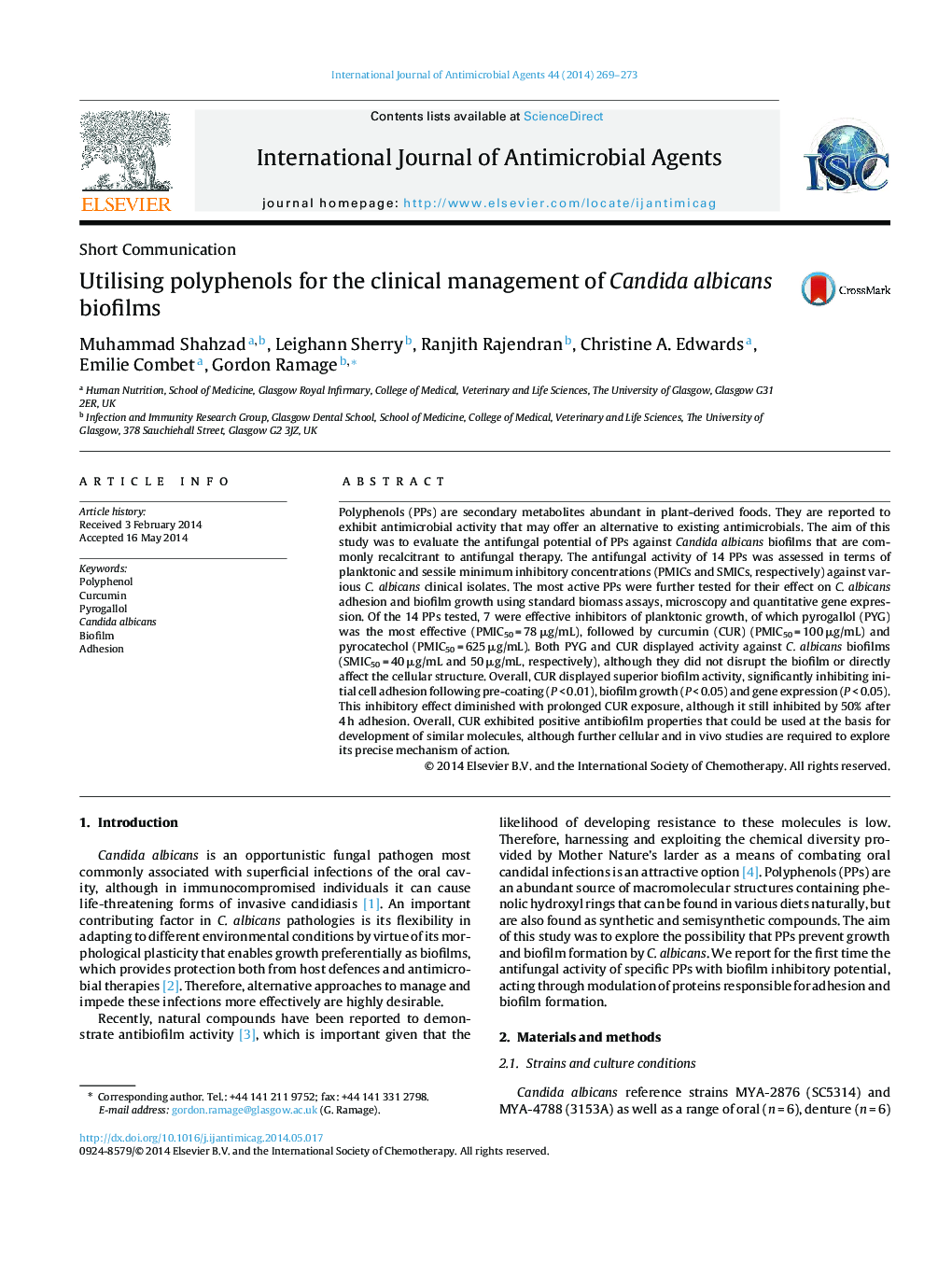| کد مقاله | کد نشریه | سال انتشار | مقاله انگلیسی | نسخه تمام متن |
|---|---|---|---|---|
| 3358514 | 1591777 | 2014 | 5 صفحه PDF | دانلود رایگان |
Polyphenols (PPs) are secondary metabolites abundant in plant-derived foods. They are reported to exhibit antimicrobial activity that may offer an alternative to existing antimicrobials. The aim of this study was to evaluate the antifungal potential of PPs against Candida albicans biofilms that are commonly recalcitrant to antifungal therapy. The antifungal activity of 14 PPs was assessed in terms of planktonic and sessile minimum inhibitory concentrations (PMICs and SMICs, respectively) against various C. albicans clinical isolates. The most active PPs were further tested for their effect on C. albicans adhesion and biofilm growth using standard biomass assays, microscopy and quantitative gene expression. Of the 14 PPs tested, 7 were effective inhibitors of planktonic growth, of which pyrogallol (PYG) was the most effective (PMIC50 = 78 μg/mL), followed by curcumin (CUR) (PMIC50 = 100 μg/mL) and pyrocatechol (PMIC50 = 625 μg/mL). Both PYG and CUR displayed activity against C. albicans biofilms (SMIC50 = 40 μg/mL and 50 μg/mL, respectively), although they did not disrupt the biofilm or directly affect the cellular structure. Overall, CUR displayed superior biofilm activity, significantly inhibiting initial cell adhesion following pre-coating (P < 0.01), biofilm growth (P < 0.05) and gene expression (P < 0.05). This inhibitory effect diminished with prolonged CUR exposure, although it still inhibited by 50% after 4 h adhesion. Overall, CUR exhibited positive antibiofilm properties that could be used at the basis for development of similar molecules, although further cellular and in vivo studies are required to explore its precise mechanism of action.
Journal: International Journal of Antimicrobial Agents - Volume 44, Issue 3, September 2014, Pages 269–273
